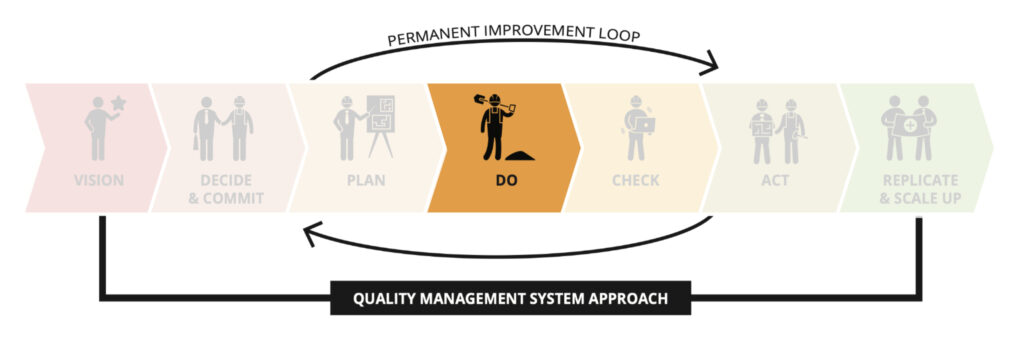NEB ambition
The ultimate ambition of the New European Bauhaus is to achieve transformation. To do this, the NEB Compass has identified specific levels of ambition that outline the desired outcomes for each of the NEB values.
The ultimate ambition of the New European Bauhaus is to achieve transformation. To do this, the NEB Compass has identified specific levels of ambition that outline the desired outcomes for each of the NEB values.
These areas refer to the five key domains of intervention that CrAFt's New European Bauhaus Impact Model considers essential for guiding and evaluating complex urban initiatives.
The participation level refers to the degree or extent to which individuals or groups are actively involved or engaged in a particular activity, project, or process. It assesses the depth of their involvement, contributions, and commitment, ranging from minimal or passive participation to active and dedicated participation.
The New European Bauhaus (NEB) aims to promote the values of sustainability, aesthetics, and inclusion in the design and transformation of urban spaces. It emphasises the integration of environmental, social, and economic considerations to create harmonious and innovative living environments.
According to the Smart City Guidance Package, there are seven stages to plan and implement smart city projects. These stages propose a logical and coherent roadmap for city initiatives involving many stakeholders.
In CrAFt Cities Session 5 —28 February 2023—, Judith Borsboom introduced Stage 4: DO concerning the implementation of programmes and projects for smart and sustainable cities to achieve their climate neutrality goals.

Among the steps in this stage, we should consider the following:
After Judith’s introduction to the process, our first guest speaker was Bart Geernaert, coordinator at The Republic, Bruges (Belgium). The city has a Climate Plan around seven themes, and they have been building a local climate alliance to reinforce this plan.
The Republic is a community of creative “city makers” —a blend of thinkers, creators and entrepreneurs— and a critical engine in the city’s climate plan. Bart delved into the organisational and financial models of The Republic and how they have been conceived to initiate new urban dynamics with a bottom-up approach and, ultimately, achieve social change.
After Patrick, Pat Stephens at Limerick Clare Energy Agency presented Limerick Positive City Exchange. Limerick is Ireland’s EU Lighthouse city. Together with Trondheim in Norway, they lead the way with several demonstration projects focused on the clean energy transition.
They have identified their city’s historic Georgian Neighbourhood as the project’s demonstration area and designated it as an innovation district, allowing them to trial and test solutions with their stakeholders.
So far, they have learned that:
Additionally, Pat mentioned they need a legislative framework for regulatory sandboxing to enable the experimentation and innovation required to achieve their goals.